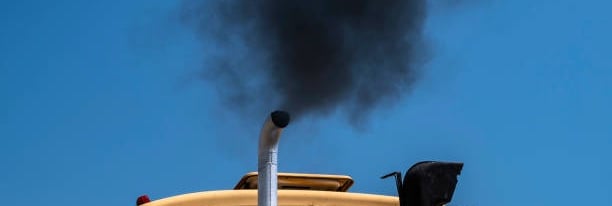Types of Smoke from Diesel Engines
Learn what white, blue, and black smoke from diesel engines reveal about engine condition, fuel issues, and maintenance needs.


Types of Smoke from Diesel Engines :
Diesel engines are widely used in various industrial, commercial, and transportation applications. One of the key indicators of engine health and performance is the color and nature of the smoke emitted from the exhaust. Different types of smoke can signal different underlying issues. Understanding these smoke types helps in timely diagnosis and maintenance of diesel engines.
Black Smoke:
Black smoke is commonly emitted from diesel engines and indicates incomplete combustion of the fuel. It can be a sign of engine inefficiency or malfunction. Some common causes of black smoke include:
Incorrect fuel injection timing
Over fueling
Incorrect fuel to air ratio
Poor fuel quality
This type of smoke is rich in carbon particles and can lead to environmental pollution and reduced engine life if not addressed promptly. (काला धुआं वातावरण को प्रदूषित करता है और इंजन की कार्यक्षमता को प्रभावित करता है।)
Hindi: काला धुआं आमतौर पर डीजल इंजनों से निकलता है और यह ईंधन के अधूरे दहन का संकेत देता है। यह इंजन की कार्यक्षमता में कमी या खराबी का संकेत हो सकता है। ब्लैक स्मोक के कुछ सामान्य कारण हैं:
गलत Fuel Injection Timing
Over Fueling
गलत Fuel to Air Ratio
खराब Fuel Quality
Blue Smoke:
Blue smoke is caused by the burning of engine lubricating oil. This oil enters the combustion chamber due to mechanical wear or other issues. Common reasons include:
Worn valve guides or seals
Cylinder and/or piston ring wear
Piston ring sticking
Incorrect grade of oil
Fuel dilution of the oil
Blue smoke is often accompanied by a distinct burnt oil smell and may indicate serious internal engine damage if persistent.
Hindi: ब्लू स्मोक इंजन के Lubricating Oil के जलने के कारण होता है। यह तेल यांत्रिक घिसावट या अन्य समस्याओं के कारण Combustion Chamber में प्रवेश कर जाता है। इसके सामान्य कारण हैं:
Worn Valve Guides या Seals
Cylinder और/या Piston Ring Wear
Piston Ring Sticking
गलत Grade of Oil
Fuel Dilution of the Oil
